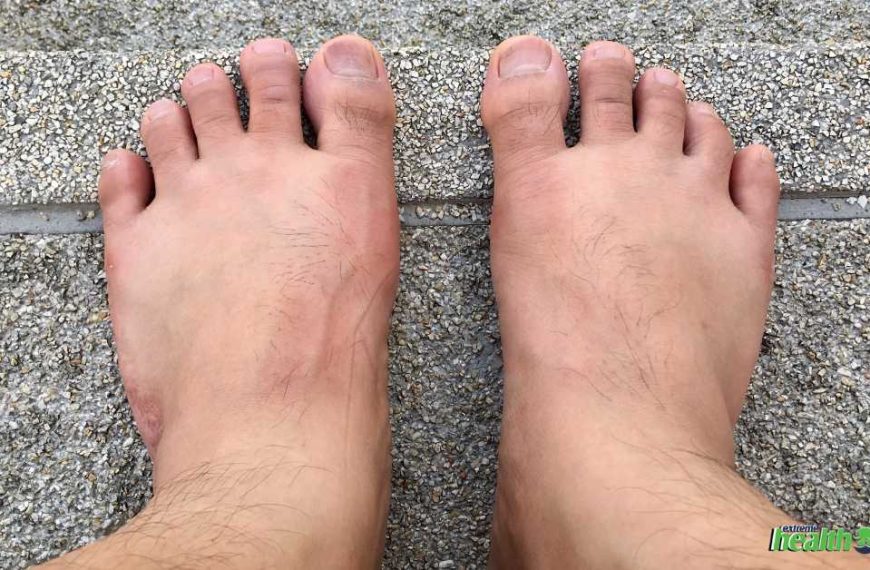Last Updated on July, 2024
Sensory Neuropathy is a type of Peripheral Neuropathy that involves the Peripheral nerves. Peripheral Neuropathy involves damaged nerves, which are no longer about to carry messages as well as they used to.
Many people across the globe are affected by health conditions associated with Peripheral Neuropathy. Nerve damage is the leading cause behind this condition; the central nervous system in patients suffering from Peripheral Neuropathy no longer works at optimal levels.
The never damage associated with the spinal cord results in muscle weakness amidst other effects of this condition.
This article will deeply explore the various stages of Peripheral Neuropathy and provide you with the information you need to understand this condition better.
Quick Summary
Peripheral Neuropathy involves nerve damage that can lead to pain, numbness, and weakness.
There are five stages of Peripheral Neuropathy, with the last stage involving a complete loss of feeling.
Preventing Peripheral Neuropathy involves avoiding substances such as alcohol and tobacco, eating a healthy diet, and exercising regularly. Early diagnosis and treatment are key to avoiding more serious complications.
Quick Navigation
- What is Peripheral Neuropathy?
- Stages of Peripheral Neuropathy
- Stage 1: Numbness and Pain
- Stage 2: Regular Symptoms and Signs
- Stage 3: Extreme Pain
- Stage 4: Persistent Numbness
- Stage 5: Total Loss of Feeling
- Signs and Symptoms of Peripheral Neuropathy
- What are the Causes of Peripheral Neuropathy?
- Is Peripheral Neuropathy a Serious Problem?
- How to Prevent Peripheral Neuropathy?
- Final Thoughts
- FAQs
- Can You Prevent Peripheral Neuropathy?
- Is Peripheral Neuropathy More Common in Old People?
- Does Peripheral Neuropathy Lead to Loss of Feeling?
- Was this article helpful?
What is Peripheral Neuropathy?

Peripheral Neuropathy involves nerve damage. The condition results when nerves outside the brain and spinal cord get damaged. The nerve damage results in weakness and pain; you will have to seek treatment if the pain becomes unbearable.
This condition can affect other areas of the body, such as digestion, urination, and even blood circulation. All these effects are brought about by nerve damage caused by various things, including accidents and even diabetes. Even vitamin deficiencies could cause nerve damage.
If Peripheral Neuropathy goes untreated, it could lead to more complications in the body, thereby leading to other problems such as ulcers, and gangrene body parts, which could even result in amputation.
Stages of Peripheral Neuropathy
The stages of Neuropathy are easy to understand. There are mainly five stages of Neuropathy. The stages of Neuropathy are better understood when looked at step by step.
Stage 1: Numbness and Pain
Neuropathic pain is linked to the nervous system. In the stages of Neuropathy, the first step involves general numbness of a body part and associated pain.
Numbness and pain are the two main early symptoms of Peripheral Neuropathy. The nerve fibers in the body start to work less effectively. It is the damage to these nerve fibers that cause numbness and pain.
This is the early stage diagnosis of this condition, and you should seek treatment during the early stages, prior to permanent nerve damage, making it harder to treat this condition.
Stage 2: Regular Symptoms and Signs
With Diabetic Neuropathy, for instance, the ability of nerves to carry signals is hampered. In order to relieve pain, you must first observe the signs and symptoms, which include pain, to deduce whether the condition is Peripheral Neuropathy.
If the signs and symptoms are observed on a regular basis, or you are experiencing debilitating pain, this could be a telltale sign that you have Peripheral Neuropathy.
The word regular relates to a few weeks. If you have intermittent pain which lasts for days and even weeks, this may be due to affected nerves in the body providing the leading cause, which may require immediate medical attention.
If you observe consistent symptoms and signs, you should seek treatment at the earliest to have the best chance of early treatment.
Stage 3: Extreme Pain
When left untreated, the signs and symptoms, which include pain, could increase, leading to intense and extreme pain. In the stages of Neuropathy, this stage is the most critical.
If you are experiencing extreme pain, this could be due to Neuropathy, and you should consider treatment soon. Treatment is the only way to soothe the pain that you may be experiencing in the third stage of this condition.
The underlying condition, pain, is caused by nerve damage.
Again, the pain experienced at this stage isn’t normal pain. It is explained as extreme debilitating pain, which the patient will experience amidst other symptoms.
Stage 4: Persistent Numbness
Due to nerve damage, your blood vessels will longer be able to function in the best way possible, resulting in pain and numbness.
At this stage of Neuropathy, you will experience both pain and numbness, which doesn’t go away. You will find a specific body part constantly numb.
The lower legs, for instance, could experience numbness. It is this numbness that is primarily associated with this stage of Neuropathy.
Stage 5: Total Loss of Feeling
The last stage involves the complete loss of feeling. This loss of feeling is caused due to the intense and repetitive pain and numbness experienced by the patient.
For instance, you could experience a complete loss of feeling in the lower legs, which is a sign that you are in the fifth stage of Neuropathy.
At this point, you will most certainly need medical help and assistance as a complete loss of feeling can be very difficult to work with (it could be disabling.)
Signs and Symptoms of Peripheral Neuropathy
With diabetic Neuropathy, for instance, though complicated symptoms may include kidney damage as a sign of late-stage Neuropathy, most signs and symptoms associated with this condition are more basic.
Pain and numbness are the most common signs and symptoms of Peripheral Neuropathy. Another sign of Neuropathy could be high blood sugar levels.
You could also experience loss of balance, weakness of muscles, and general difficulty in doing basic tasks around the house that you previously didn’t have any problems with. This may include walking and resting.
The level of complication is understood by the level of pain experienced. As the stages of this condition develop, the pain and discomfort experienced increase (one of the few common symptoms of this condition.)
What are the Causes of Peripheral Neuropathy?
There are many causes of this condition. Traumatic injuries are one of the leading causes of Neuropathy. If you experience an accident that results in nerve damage, it could lead to Neuropathy being developed during recovery.
Other causes include infections and metabolic problems, which could lead to the development of Peripheral Neuropathy.
Though the condition can be genetically inherited, our diet and exposure to toxins that damage nerves play a crucial role. Since Peripheral Neuropathy is caused by nerve damage, it is the exposure to toxins that damage nerves that are important in better understanding this condition.
Is Peripheral Neuropathy a Serious Problem?
Though the condition is rarely life-threatening, Peripheral Neuropathy can be a severe problem for many people affected by it.
The effects can often be disabling, which is the major problem. The inability to move the whole body or a body part can be a severe problem for many people.
Not to mention the extreme pain associated with the condition. Though symptoms may develop over days, weeks, months, or years, if left untreated, it could lead to the complete loss of feeling in a body part, which could be a VERY serious problem.
How to Prevent Peripheral Neuropathy?

Avoiding substances such as alcohol and tobacco, which have nerve-damaging effects, is an excellent way to prevent the development of Peripheral Neuropathy.
Apart from that, you should also try to better your diet and correct vitamin deficiencies. Eating a healthy diet, which includes all the nutrients needed for healthy living, could be the best way to combat this illness. Fortified cereals are rich in vitamins and can be a great addition to the diet to prevent this condition.
Losing weight could also help you restore nerve damage and better care for your body. Regular exercise will allow you to flush out toxins that could damage your health. Avoiding toxins will keep nerves healthy, thereby preventing the onset of this condition.
Final Thoughts
Peripheral Neuropathy can be a very difficult condition to handle. If not treated at the early stages, it could be challenging to reverse the effects of this condition. Hence, like all medical conditions, it is vital that you diagnose the problem as early as possible and seek treatment during the early stage of the illness.
The condition involved a lot of pain and numbness. When left untreated, it could lead to complete loss of feeling in a body part, requiring amputation as the only means to resolve the issue.
I hope the information in this article has been helpful and you have the information and direction to diagnose better and treat Neuropathy.
Remember, the sooner you diagnose the condition, the better. You DO NOT want to have to risk amputation.
FAQs
Was this article helpful?
Was this article helpful?









